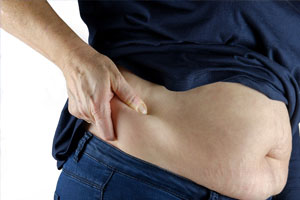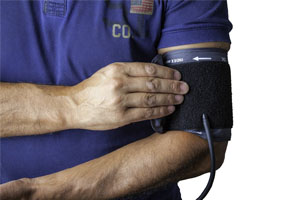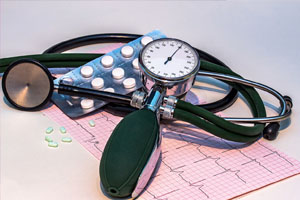Dive into the diverse world of depression with this comprehensive guide Learn about the various forms of depression, from major depressive disorder to situational depression, and discover their unique characteristics, symptoms, and potential treatments Gain insights to better understand and manage this prevalent mental health condition
What is the spectrum of depression? Understanding the various forms of depression is crucial for identifying, managing, and seeking appropriate treatment for this widespread mental health condition. From major depressive disorder to situational depression, each type of depression presents unique characteristics and challenges. In this comprehensive guide, we'll delve into the nine different forms of depression, shedding light on their distinctions, symptoms, and potential treatments. Whether you or someone you know is dealing with depression, this article aims to provide valuable insights into the diverse faces of this condition.

The Many Faces of Depression
Depression is not a one-size-fits-all condition; it comes in various forms and can affect individuals differently. Understanding the different types of depression is crucial for proper diagnosis and effective treatment. Here are the nine distinct forms of depression:
1. Major Depressive Disorder (MDD)
Major Depressive Disorder, often referred to as clinical depression, is one of the most common and widely recognized forms of depression. It involves a persistent feeling of sadness, hopelessness, and a loss of interest or pleasure in activities. To be diagnosed with MDD, an individual must experience these symptoms for at least two weeks.
2. Persistent Depressive Disorder (PDD)
Persistent Depressive Disorder, also known as dysthymia, is a chronic form of depression. Individuals with PDD experience a milder but long-lasting form of depression, with symptoms lasting for at least two years. While the symptoms are not as severe as major depressive disorder, they can significantly impact a person's quality of life.
3. Bipolar Disorder
Bipolar disorder is characterized by extreme mood swings that include periods of intense euphoria (mania) and periods of severe depression. There are several subtypes of bipolar disorder, including Bipolar I, Bipolar II, and Cyclothymic Disorder, each with varying levels of mood intensity and duration.
4. Seasonal Affective Disorder (SAD)
Seasonal Affective Disorder (SAD) is a form of depression that typically occurs during specific seasons, most commonly in the fall and winter when there is less natural sunlight. It is believed to be related to changes in light exposure, which can disrupt the body's internal clock and lead to depressive symptoms.
5. Psychotic Depression
Psychotic Depression is a severe form of depression that combines the symptoms of major depression with psychosis. Psychosis refers to a detachment from reality, often involving delusions (false beliefs) and hallucinations (false perceptions). Individuals with psychotic depression experience these additional symptoms alongside the typical signs of depression
6. Atypical Depression
Atypical Depression is a subtype of major depressive disorder. It's called "atypical" because the symptoms differ from the classic signs of depression. Individuals with atypical depression may experience mood reactivity, which means they can briefly improve in response to positive events. They may also have increased appetite or weight gain, hypersomnia (oversleeping), leaden paralysis (a heavy feeling in the arms or legs), and a strong sensitivity to rejection. Unlike other forms of depression, atypical depression often has a specific pattern of symptoms.
7. Postpartum Depression
Postpartum depression is a type of mood disorder that occurs after childbirth. It's more severe than the "baby blues" and is characterized by persistent feelings of sadness, anxiety, and exhaustion. New mothers with postpartum depression may experience mood swings, difficulty bonding with their baby, changes in appetite and sleep patterns, and overwhelming fatigue. It's essential for new mothers to seek support and treatment for postpartum depression, as it can affect their well-being and their ability to care for their child.
8. Premenstrual Dysphoric Disorder (PMDD)
Premenstrual Dysphoric Disorder (PMDD) is a severe form of premenstrual syndrome (PMS) that affects some women during their menstrual cycle. Women with PMDD experience significant emotional and physical symptoms in the two weeks leading up to their period. These symptoms can include extreme mood swings, irritability, depression, fatigue, and physical discomfort. PMDD can interfere with a woman's daily life, making it essential to seek medical advice and treatment to manage the condition.
9. Situational Depression
Situational Depression, also known as adjustment disorder, is a short-term condition triggered by a specific stressful event or situation. It is characterized by feelings of sadness, hopelessness, and despair in response to challenging life circumstances, such as a breakup, job loss, or a traumatic event. Unlike clinical depression, situational depression typically resolves once the individual adjusts to or copes with the situation causing distress.
Frequently Asked Questions (FAQs) About Depression
Q1: What are the common symptoms of depression?
A1: Common symptoms of depression include persistent feelings of sadness, loss of interest in activities, changes in appetite or weight, sleep disturbances, fatigue, and difficulty concentrating.
Q2: Can depression be treated successfully?
A2: Yes, depression is treatable. Many individuals respond well to therapy, medication, or a combination of both. Early intervention and seeking professional help are essential.
Q3: Are there different types of depression besides those mentioned in this article?
A3: Yes, there are various forms of depression, including dysthymia, cyclothymic disorder, and disruptive mood dysregulation disorder, among others. The article focuses on the most common types.










